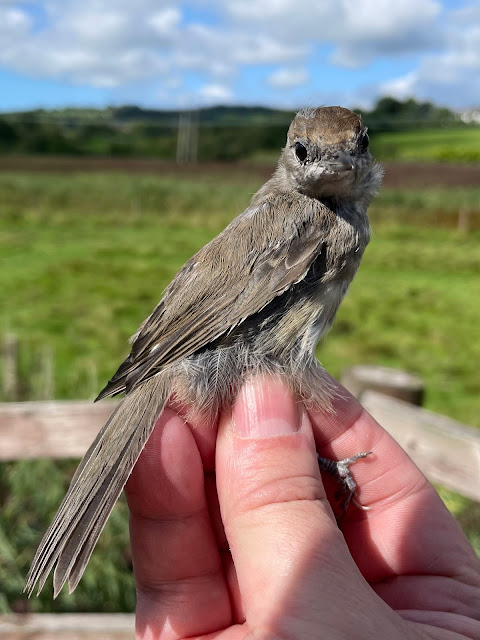After a spot of cow herding, 8 nets were set around the Colyford Common end of the reserve. It was the best turn out for some time, with 8 ringers attending. The first couple of rounds we had more ringers than birds, and it looked like there would be a lot of thumb-twiddling during the morning. However, at around 9:30 it livened up and we had an excellent session, catching 74 birds of 18 species.
Whilst birding, Willow Warblers & Chiffchafs can be quite difficult to tell apart unless they're singing. However, a pair of young birds caught together show how different they can be.
 |
| Chiffchaff in complete juvenile plumage on the left. Young Willow Warbler on the right. |
 |
In the hand, a close look at the wing can differentiate between the species, even in birds that have the same general appearance. A Chiffchaff will have the outer 6 primary flight feathers emarginated, but a Willow Warbler will only be emarginated to the 5th feather.
 |
| The wing of a Willow Warbler as only the outer 5 feathers emarginated (feathers 1 & 2 partly obscured in this photo) |
We caught 15 Blackcaps, all of which were this year's youngsters, although they had been hatched at various times & were in different stages of their post-juvenile moult; some were still in complete juvenile plumage, some were part way through their moult, and one had finished.
 |
| Blackcap undergoing post-juvenile moult, still with juvenile head feathers. |
 |
| Blackcap wing showing greater coverts in various stages of growth, this bird having lost the greater coverts grown in the nest. |
16 of the 17 Goldfinches caught were juveniles which hadn't yet completed their post-juvenile moult to acquire their red faces.


